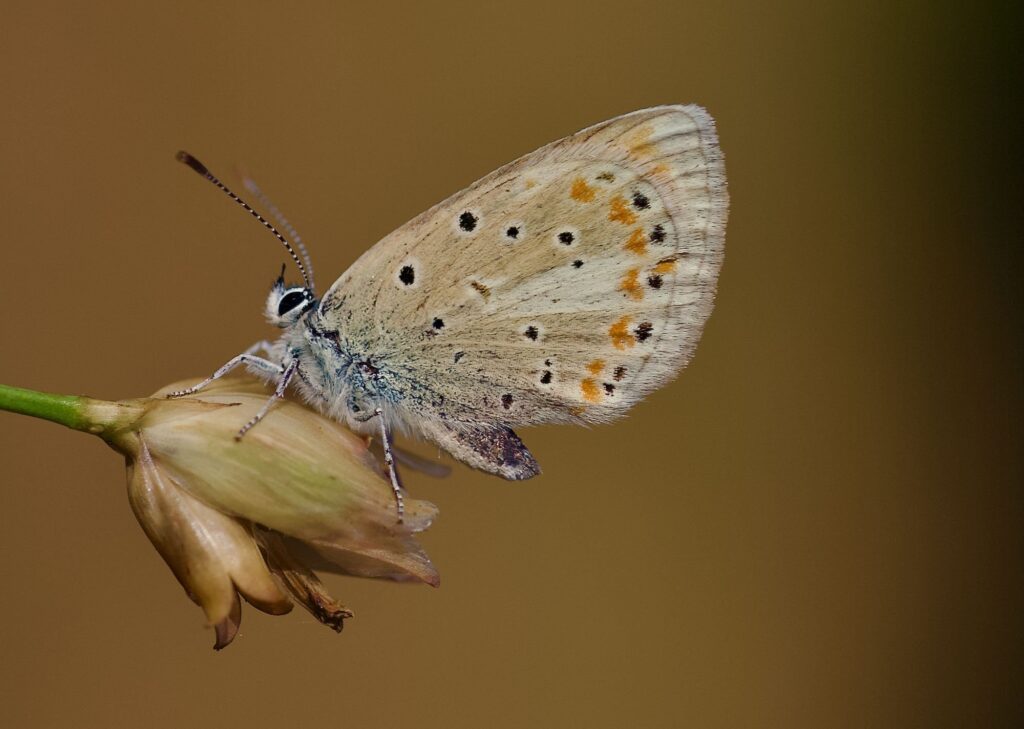
The Atlas blue butterfly, scientifically known as Polyommatus atlantica, has captured the attention of scientists worldwide with its record-breaking 229 pairs of chromosomes. This discovery is shedding light on evolutionary processes, adaptation mechanisms, and even potential insights into human cancer. The findings were detailed in a recent publication in Current Biology.
Researchers from the Wellcome Sanger Institute and the Institute of Evolutionary Biology in Barcelona have confirmed that the Atlas blue butterfly possesses the highest number of chromosomes ever recorded in a multicellular animal. Unlike its relatives, which typically have 23 or 24 pairs, this butterfly’s chromosomes have split into smaller sections over time, rather than being duplicated, leading to its unique genetic structure.
Unveiling the Genetic Blueprint
This groundbreaking research marks the first time the genome of the Atlas blue butterfly has been sequenced. The project has resulted in a high-quality reference genome, which will serve as a crucial tool for comparing with other butterflies and moths. Such comparisons are essential for understanding species diversification and evolutionary patterns over millions of years.
Evolutionary changes often span vast timeframes, making them challenging to study directly. By analyzing the DNA of a species and comparing it with its relatives, scientists can discern which genes and traits have persisted or disappeared, offering clues about evolutionary pressures and adaptations.
Insights Into Adaptation and Conservation
The genetic story of a species not only reveals its past but also hints at its future. Understanding the genetic makeup of the Atlas blue butterfly could inform conservation strategies, particularly in the face of climate change. By identifying genes that confer resilience, researchers could bolster efforts to protect vulnerable species and even apply these insights to develop more robust crops.
Native to the mountain ranges of Morocco and northeast Algeria, the Atlas blue butterfly was long suspected to have the most chromosome pairs among animals. This research confirms those suspicions and provides a basis for further exploration of how chromosome number changes contribute to species formation and environmental adaptation.
In this study, scientists discovered that the chromosomes had split at points where the DNA is less tightly coiled. This rearrangement maintained the overall genetic content but in smaller, more numerous sections. Over approximately three million years, the chromosome count increased from 24 to 229, a remarkably rapid change by evolutionary standards.
While extreme chromosomal changes are often viewed negatively, the Atlas blue butterfly has thrived for millions of years. However, current threats such as climate change and habitat destruction pose significant risks to its survival.
Links to Human Health
The implications of this research extend beyond entomology. Chromosomal rearrangements similar to those observed in the Atlas blue butterfly also occur in human cancer cells. Understanding these processes in butterflies could lead to breakthroughs in cancer research, potentially identifying ways to mitigate or halt chromosomal changes in cancerous cells.
“Breaking down chromosomes has been seen in other species of butterflies, but not on this level, suggesting that there are important reasons for this process which we can now start to explore,” said Dr. Roger Vila, senior author at the Institute of Evolutionary Biology.
Dr. Charlotte Wright, first author at the Wellcome Sanger Institute, highlighted the collaborative nature of this research:
“When we set out to start to understand evolution in butterflies, we knew we had to sequence the most extreme, and somewhat mysterious, Atlas blue butterfly.”
Professor Mark Blaxter, also from the Wellcome Sanger Institute, emphasized the broader significance:
“Genomes hold the key to how a creature came to be, but also, where it might go in the future. Understanding this process in the Atlas blue butterfly could help find ways to limit or stop this in cancer cells in the future.”
The research, titled “Constraints on chromosome evolution revealed by the 229 chromosome pairs of the Atlas blue butterfly,” was published on September 10, 2025, in Current Biology. It was funded by the Wellcome Trust.
As scientists continue to explore the genetic intricacies of the Atlas blue butterfly, they hope to unlock further secrets of evolution and adaptation, offering insights that could benefit both biodiversity conservation and human health.




